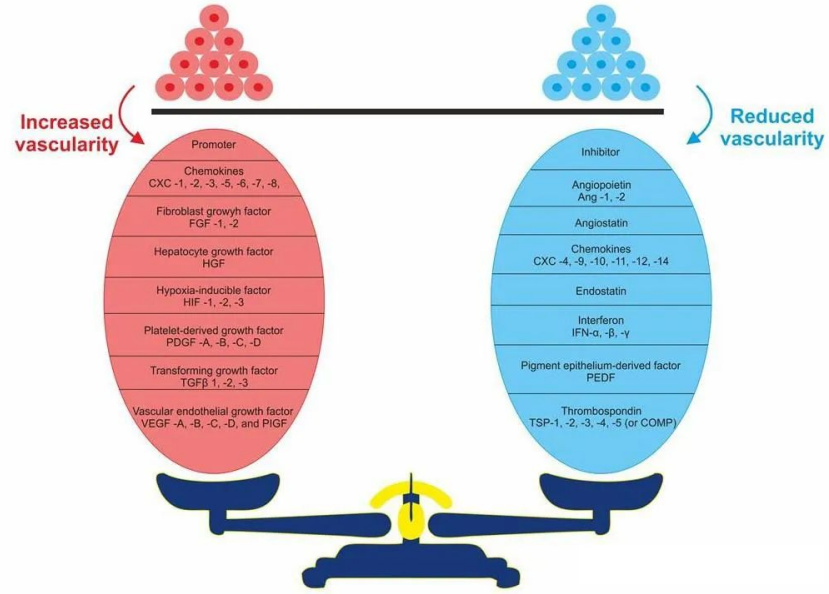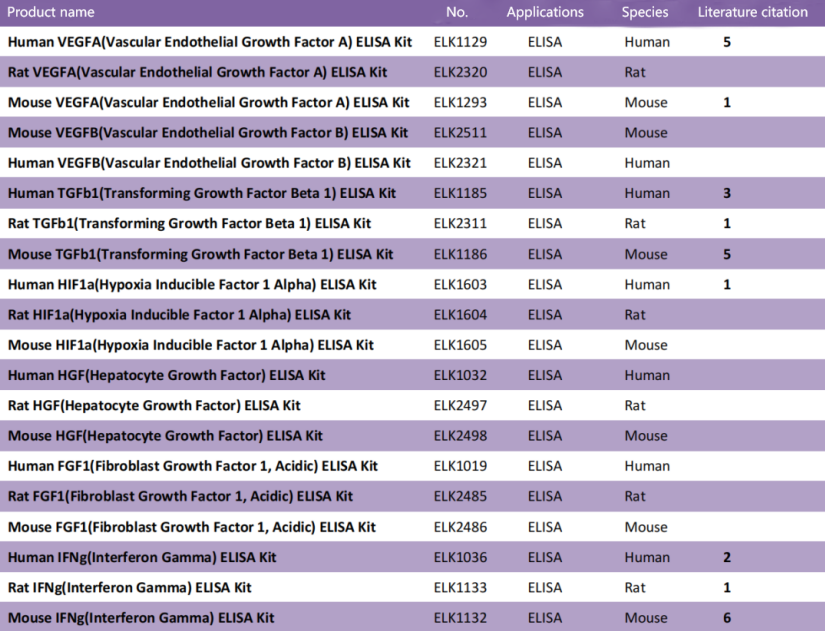

Angiogenesis - Targeting VEGF
Angiogenesis
Tumor cells are abnormally proliferating cells in the human body. In order to meet the needs of metabolic functions, new blood vessels are needed to provide sufficient nutrients and oxygen for the growth of tumor cells, while taking away metabolic waste to maintain the normal metabolism of tumor cells. Therefore, the dynamic balance of pro-angiogenic factors and anti-angiogenic factors in the tumor tissue microenvironment is broken (tumor cells secrete a large number of pro-angiogenic factors), and it shifts in the direction of pro-angiogenesis. This mechanism of new blood vessels in tumor tissue is called the "angiogenic effect" of tumors.
Picture 1

Dynamic balance of pro-angiogenic factors and anti-angiogenic factors
VEGF is the most important inducing factor of angiogenesis, and its members include VEGFA, VEGFB, VEGFC, VEGFD, VEGFE, VEGFF, and PIGF.
Picture 2

01 Regulatory mechanism of VEGF and VEGFR signaling pathway and angiogenesis
VEGF regulates tumor angiogenesis, mainly by binding to its receptors (VEGFR1, VEGFR2 and VEGFR3), thereby activating intracellular signaling pathways. After VEGFR and VEGF proteins bind, the tyrosine in their intracellular signal transduction region is phosphorylated, activating the intracellular signaling pathway, which ultimately leads to the growth, proliferation and maturation of vascular endothelial cells and promotes the formation of new blood vessels.
02 The role of VEGFR-mediated intracellular signaling pathways in tumor angiogenesis
VEGF activates the transcription factor NFκB signaling pathway after binding to VEGFR1, thereby inhibiting DC cell maturation. VEGFR2 induces endothelial cell proliferation by activating the ERK signaling pathway. In addition, VEGFR2 changes vascular permeability and maintains epithelial cell activity by activating the PI3K/AKT signaling pathway. Finally, VEGFR2 induces endothelial cell migration by activating the p38 signaling pathway. At the same time, VEGF also binds to the NRP of epidermal cells, further enhancing the VEGFR2-mediated signaling pathway.
03 VEGF as an important target for anti-tumor therapy: a key role in regulating angiogenesis
High VEGF expression can be observed in most malignant tumors. VEGF secreted by tumor cells and surrounding matrix stimulates endothelial cells, leading to abnormal growth of blood vessels inside and around the tumor, and abnormal structure and function of blood vessels. Therefore, the core role of VEGF in tumor angiogenesis makes it an important target for anti-tumor therapy.
Related product recommendations
As a protein antibody supplier in the field of life sciences and medicine, ELK Biotechnology can provide high-quality reagents for related research. Some products are listed for your reference. See the table below for details:

References:
[1] Apte R S, Chen D S, Ferrara N. VEGF in signaling and disease: beyond discovery and development[J]. Cell, 2019, 176(6): 1248-1264.
[2] Samson M, et al. (2004) Human endocrine gland-derived vascular endothelial growth factor: expression early in development and in Leydig cell tumors suggests roles innormal and pathological testis angiogenesis. J Clin Endocrinol Metab, 89(8):4078–4088.
[3] Pan Zhiguang, et al. (2017) Vascular endothelial growth factor promotes the remodeling of neurovascular units in the injured brain. Acta Physiologica Sinica 69(1): 96–108.


